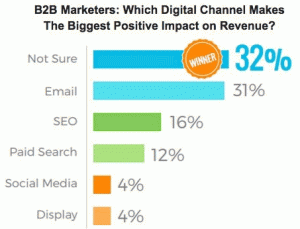I hope to distill the myth that CIOs and their IT staff are the ‘blockers’ to change but are the folk who are advocates and can enable it to happen!
I’m now working as a CTO but I in this blog I will draw upon my experience when I first arrived as a CIO (although much of this advice applies to both roles). So for this blog I asked myself this; what really made a difference to the success of an email marketing project when the CMO came to me as CIO.
6. Acronym soup
You will find these all over the place but if you want to know some then make sure you know these three. I won’t go in to detail as Wikipedia can do that but I will explain why they’ll be useful for your CIO!
API (Application Programming Interface). When it comes to ESPs these will be one of the CIOs favourite things and normally helps answers the question of ‘how can my system integrate with yours’. Many CIOs know the true cost of software development, its big, and tends to move towards a more cost effective approach of integrating the best of breed systems together to meet the business needs. Therefore how well you’re ESP plays with other software, by communicating in a common language over the internet, will be high on their list of things to check in any due diligence process.
SLA (Service Level Agreement), put simplistically – what can you expect for your money. It may relate to the support or availability of an email marketing solution you put in place. These agreements normally have a number of elements however your CIO will likely ask to see one (or the terms and conditions with them in) to make sure they know how the technology and service is going to support your needs. Pre-empting the CIO asking to see one is only going to help the collaboration!
HTML (HyperText Markup Language) is a long standing acronym however incredibly important in the digital marketing space. Your CIO will know that a high level of development expertise from his team may be required to really optimize the look of your messages. Again this is where dotmailer can help. We can manage your campaigns and HTML templates for you as part of our professional services, making this a resource your CIO may not need to find, which will be music to their ears.

7. The pain of delivering emails taken away
At a technical level any CIO who has had the experience of trying to send large quantities of marketing mail from their internal IT infrastructure will know that a whole new world of pain exists trying to deliver to worldwide Internet Service Providers with their varying policies in how fast they accept email and what is let through. Doing it in-house will quickly lead to blacklisting if you don’t know what you’re doing. This will significantly affect your ROI. Here at dotmailer we have many years of experience with this art and work with some of the thought leaders in the digital marketing space to help make sure our email delivery to the ISPs is managed well for our customers. This isn’t a headache your CIO wants, so make sure you sell him the benefit of this if you are looking to go with a cloud-based ESP.
8. More numbers!
Communicating your email marketing plan as part of the process will really help the CIOs understand the technology requirements. Amount of active contacts, the subsidiary data on these, what the marketing program looks like, predicated send volumes, the types of sends, their frequency and where the originating data comes from are all good bits of information to have up your sleeve or as part of the requirements gathering stage of the project.
9. Where’s my data?
This is an extremely important question and again one that your CIO is definitely going to be asking.
The tip here will be to have this information to hand with your prospective email marketing technology. Where the data is physically stored has an impact on what legislation it is governed by and how much granular control your business will have over its security. So it’ll be important to know this, especially if you’re using a cloud-based ESP. The CIO will also be thinking ahead about how to get data ‘in and out’ in the event that you need to change technologies in the future, so again the API acronym is a good savior, as it will help reassure that the system is flexible to work with!
10. Packaging it up into a project
Coming back to where I first began this blog, those lovely 1’s and 0’s. Any of your email marketing technology solution changes should be run as projects. The devil is in the detail and managing this detail will ultimately have an impact on its success and ROI you get. Many of the most famous project management frameworks used globally have been born out of the need to increase the success rate of technology related projects (PRINCE2 to name a biggie!).
IT projects do fail and normally it’s where a level of detail hasn’t been taken into account, scope has crept or collaboration/communication has fallen down. Managing the actions and risks of the project will enable a CIO and their team to be involved and concentrate their involvement in manageable tasks with clear deadlines. It doesn’t need death by GAANT chart, but clear objectives, an end point, and a series of tasks with someone project managing who is motivated to see it through. If the IT resource is content, ultimately the people who get it are those who ‘shout loudest’ or those ‘who are best prepared’. Be well prepared and the CIO you’re working with will ultimately have to work with you and follow your lead.
I hope these tips are useful when engaging your CIO. In case you missed part one you can find it here.
The most successful businesses will have a strong CIO – CMO relationship. So to make sure both ends are happy, communication is key. Using an email marketing platform such as dotmailer could be a huge help in taking a large part of work away from IT, leaving them more freed up for new projects.
Digital & Social Articles on Business 2 Community(64)
Report Post








